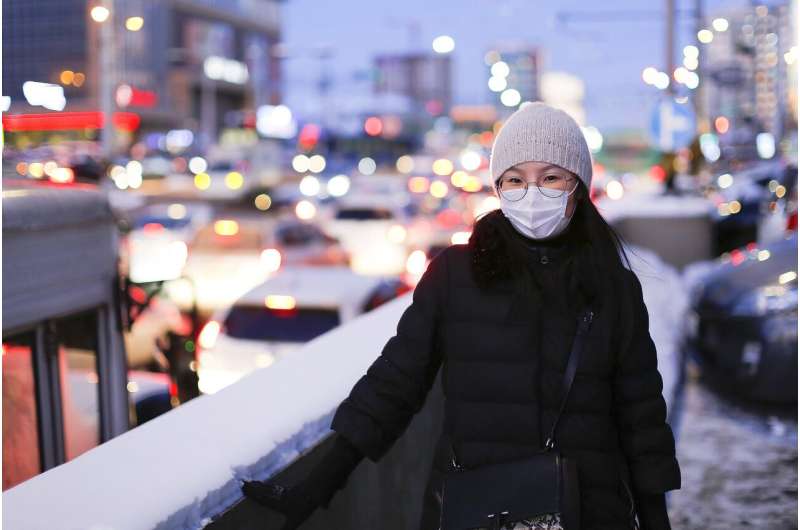Hate crimes against Asians in Italy more frequent in areas with high unemployment

Early into the coronavirus pandemic as anti-Asian violence began to rise in the United States and in Europe, political scientist Guy Grossman, Penn Development Research Initiative postdoctoral fellow Stephanie Zonszein, and Gemma Dipoppa, who earned her Ph.D. at Penn and is now a postdoc at Stanford University, wanted to look at what triggered these waves of hate crimes. Was it fear of infection, scapegoating, or something else?
The group looked at Italy, where the pandemic first hit particularly hard outside China, because it is part of a rising trend in Europe of exclusionary attitudes toward migrants, Dipoppa says. Italy also keeps good data on hate crimes.
"There was a sense that it was really the epicenter, at least in the early stages of the disease, and we thought Italy could teach us important lessons about how things might develop in other places once the virus started to spread," says Grossman.
What they found was that hate crimes increased at the pandemic's onset. This increase was especially pronounced in areas where higher unemployment was expected because of the shutdown but not in places that were experiencing higher infections and mortality.
Among those communities that were hard-hit economically, the ones with extreme right-wing mayors had an exceptionally high increase in hate crimes, they found.
The group looked at 13 years of data, going back to 2007 and ending in March 2020.
One of the characteristics that makes the study unique from other research on the topic is the team was able to focus on hateful behavior, whereas other studies have focused on the effect of economic and health trends on exclusionary attitudes, Grossman says.
"In this case we were really able to capture a behavioral outcome such as whether there were physical attacks or verbal attacks," Dipoppa says.
There have been studies on trigger events and hate crime, but they have focused mostly on terror attacks, like after 9/11 and the Paris attacks, says Grossman.
"Our research shows these situational triggers don't need to be terror attacks," he says. "What's unique about this pandemic is that it also changes the structural conditions, in the sense that now there's high unemployment and people are fearful of losing their jobs. The idea of a pandemic changes risk perception, but also changes your economic condition."
Other work done on economic conditions and hate crimes shows these violent reactions happening after long-term structural changes that unfold over a long period of time, Grossman says.
An example would be the Rust Belt in the United States, where economic changes over a long period of time have placed some residents in a precarious financial situation, and their anxieties and frustrations could lead to scapegoating a minority group, Grossman says.
However, this study showed how quickly scapegoating can occur.
"We were able to show that the activation mechanism, where people scapegoat a group as a way of coping with frustration, can happen really fast," he says.
In places with high tourism where the economy is built around restaurants and hotels, hate crimes started even before the formal lockdowns.
"We know from the literature on hate crimes and criminal behavior in general that the typical perpetrators are generally young male individuals, and those are exactly the type of people who are most likely to be hit by unemployment related to tourism and transportation, the sectors that were most affected," Grossman says. "These younger people are less likely to be victims from a health perspective, but more likely to be affected from an economic perspective."
The researchers say leaders play a role in sparking this violence.
"We found being prejudiced toward immigrants wasn't enough to observe these hateful reactions. People needed the support of a leader who was mobilizing that prejudice," Zonszein says.
Leaders can also play a role in warding off such reactions, Grossman says, like after terror attacks when city and national leaders appear at a mosque to show support for the community. But these far-right mayors are not necessarily going to behave that way, and in some ways are trading on these prejudices to get or stay in office, he says, making it a challenge to combat the behavior.
"It's crazy when you think about the process that needs to happen from an incident of a virus jumping from an animal to a human in China leading to an Italian of Asian descent being spit on in a train in Milan," he says. "That people can take a health incident and make it about scapegoating tells us a lot about the production of hate."
The study also further highlights how the pandemic has had an unequal effect on groups around the globe, Dipoppa notes. Immigrants were already being discriminated against in Italy before the pandemic hit and now are facing an even harder time, she says.
Provided by University of Pennsylvania


















